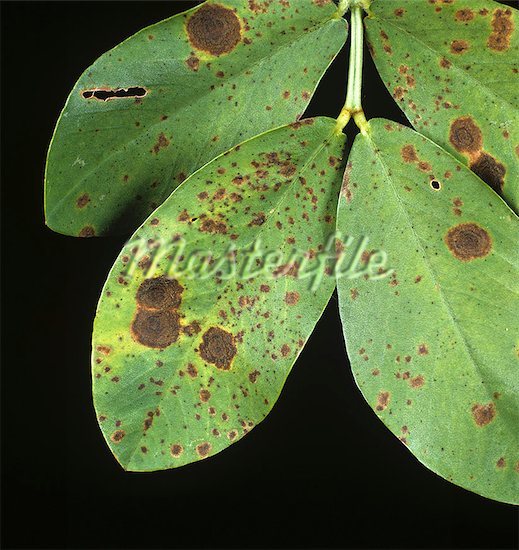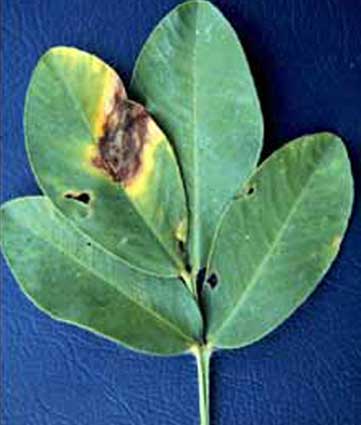Tikka Disease of
Groundnut
Host: Arachis
hypogea Systematic Position
Pathogen: Cercospora
species Division:Eumycota
Sub-division:Ascomycotina
Class:Dothideomycetes
Order:Dothidiales
Family:Mycosphaerellaceae
Genus:Cercospora
Species:personata,arachidichola
Introduction
This is the most important fungal
disease of groundnut. In India (1974), it has been reported from all parts
wherever it is cultivated and causes loss to the yield at about 15-60%
Symptoms
C.personata
·
Leaf
spots are circular (1-6dm) and more
in number.
·
Slightly
pale colour on the lower surface in
the beginning and turns brown to black colour upper surface during
maturity.
·
No
halo around the young spots but yellow halo around the matured spots.
·
Spots
are produced before one month.
C.arachidicola
·
Leaf
spots are circular to irregular
(1-10mm,dm) and less in number.
·
Spots
are reddish brown in the beginning
and turns during maturity on upper surface and light brown on lower surface.
·
Halo
is present from the beginning onwards.
·
Spots
are produced after one month.
Casual organism
The
fungus "C.personata and C.arachidicola” causes Tikka disease of
ground nut.
Fungal Structure in C.personata
The
mycelium is intercellular, brown,
septate, branched hyphae consisting "conidiophores”
with ‘haustoria’ and spores ‘conidia’
usually terminal, cylindrical, septate with obclavate shape.
Fungal Structure in C.arachidicola
The mycelium is
intracellular, brown, septate, branched hyphae consisting ‘conidiophores’ without haustoria and with spores ‘conidia’ usually septate, curved with
obclavate shape.
Disease cycle
The
primary infection takes place
through conidial spores (survives in soil) present on the plant debris and
these spores are carried by wind and causes infection to the moist leaf either
directly or through stomata results as secondary
infection.
 
C.personata C.arachidicola
Favorable Conditions
·
High
humidity i.e., 70-80%.
·
Optimum
temp., i.e., 20-26⁰c.
Control measures
·
Using
of disease resistant varieties
·
Changing
the crop frequently
·
Field
sanitation
·
Use
of fungicides like ‘Benlate’ and ‘Vitavax’.
·
Spraying
with ‘Bordeaux mixture’ ‘Dithane’, ‘Bavistin’.
| 




